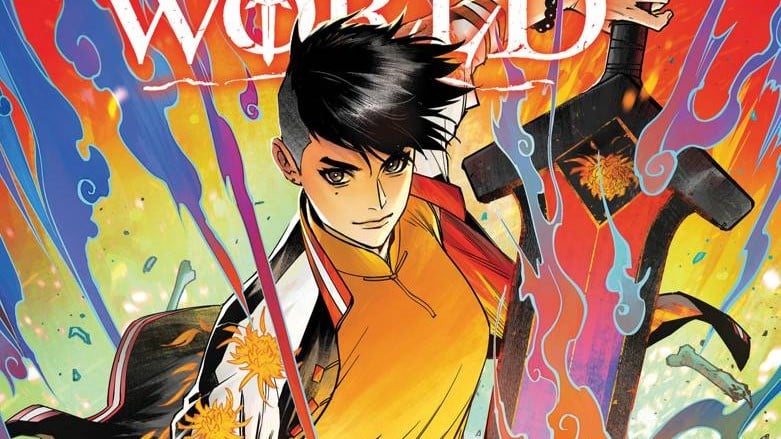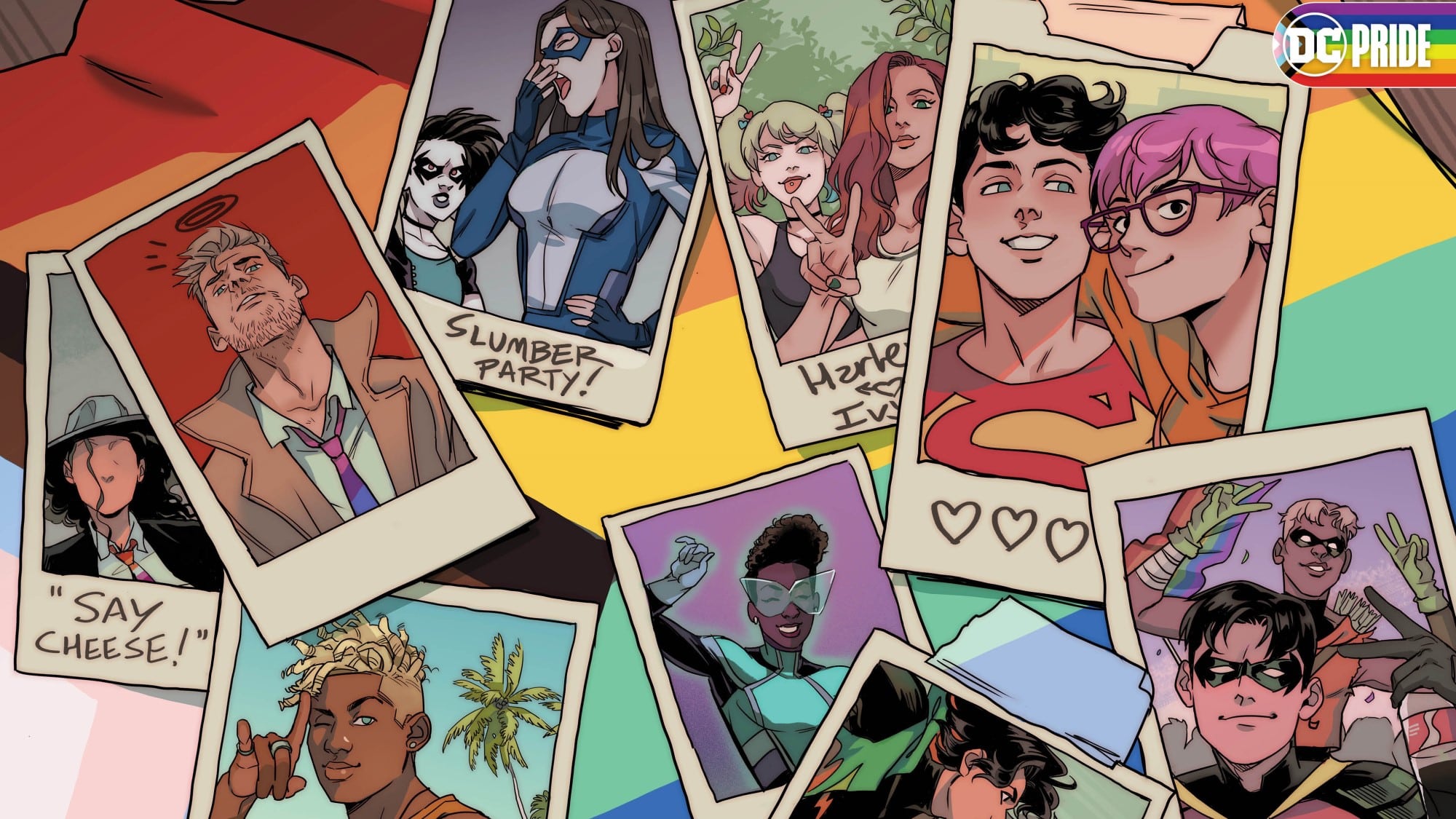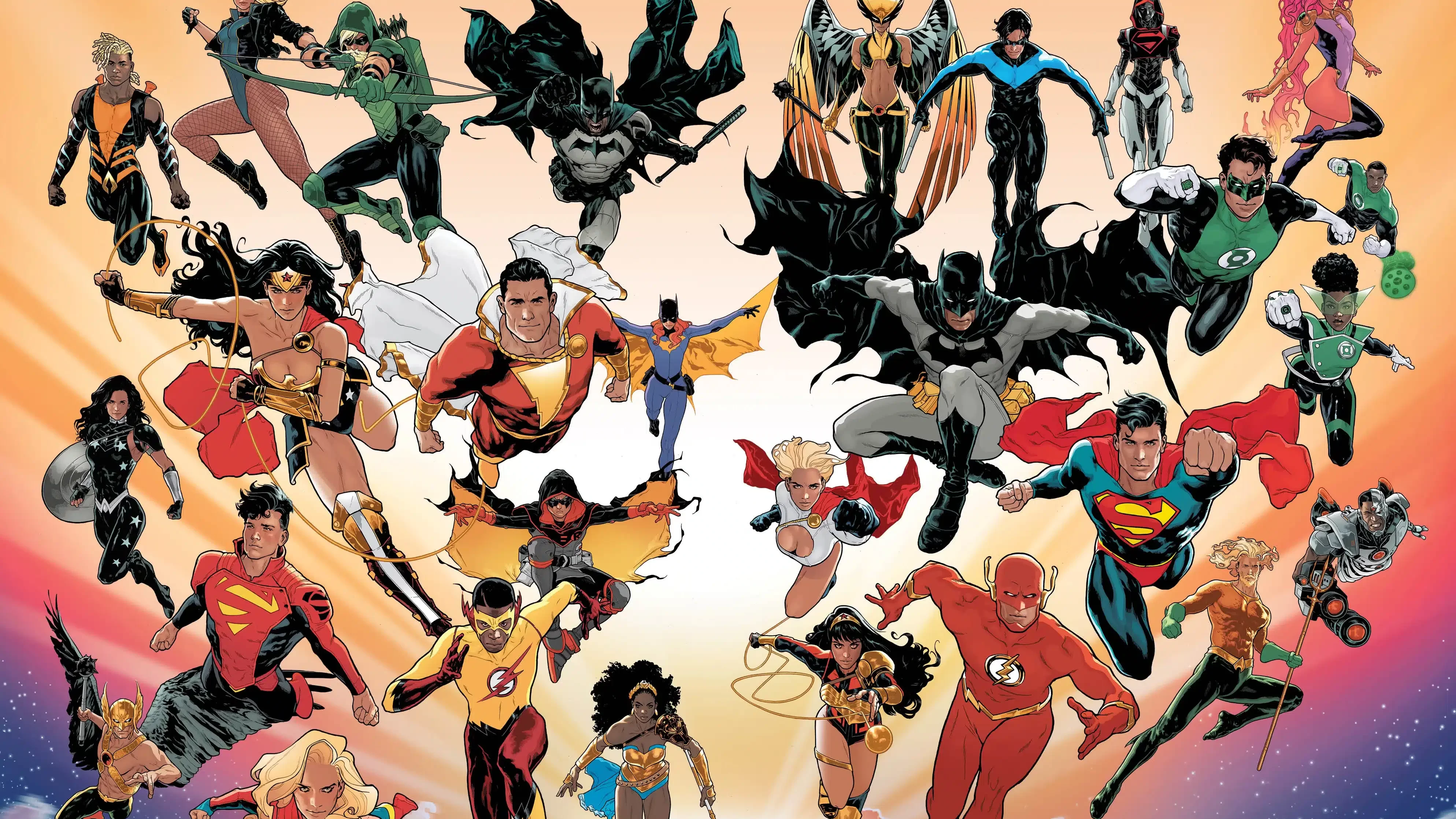An old legend breathes new life and a new avatar of the Green is born. Destined to meet, does Levi Kamei have what it takes to confront the immortal beings that lay waiting? Join us in looking at The Swamp Thing #1, written by Ram V, penciled by Mike Perkins, colored by June Chung and lettered by Aditya Bidikar.
Ari Bard: Hey Vishal, I was thinking of planning a trip out to the desert to get away for a bit. Maybe I’ll catch one of those weird giant monoliths people were talking about a few months back. Would you like to come along?
Vishal Gullapalli: Sure, the desert sounds fun! Dry heat, minimal water or vegetation, sand everywhere – I can’t imagine anything dangerous happening there! The desert is safe, right? Completely normal?
Out in the Old West
AB: Yea, I’m sure there aren’t any urban legends or desert folktales we need to worry about, unlike in The Swamp Thing #1 from Ram V, Mike Perkins, Mike Spicer and Aditya Bidikar, where we’re confronted with a murder investigation from page one. The creative team comes out swinging from the beginning, transitioning from a graphic first page filled with discussion of maggots complete with close-up watercolored maggots to a bombastic double page spread detailing a murder investigation in the brutal desert heat. The detail of the spotted ground, sandy air, and grizzled expressions really blew me away here, and it’s definitely a different way to begin a tale of a character that is usually so much larger than life. What’d you think, Vishal?
VG: Absolutely, Ari – the book is visually captivating from the start, in large part due to Spicer and Perkins working together incredibly well. The desert doesn’t just look harsh, it looks dead. Not only is the sand a hostile shade of orange, the sky is an intimidating yellow – a reminder, or warning, that this is not a place of life. The people are all dressed in blue, a striking contrast from their surroundings, which only serves to show how out of their element they are. They don’t belong here. We don’t belong here.
The story we’re told is fascinating, too. It’s really just banter between people investigating a corpse, but the way the art makes everything look genuinely scary is masterful. I’d have to say Spicer is the MVP here – every panel is colored in a way that evokes a feeling, be it desolation, anger, or horror. It’s enthralling.
AB: That’s a great way to put it, Vishal. This series really feels like it’s invoking the first season and issue of Grant Morrison and Liam Sharp’s The Green Lantern: from the iconic “Becoming” double page title card that will never escape my mind, to the western take on a classic character, except this team is bringing something brand new. This isn’t a rebirth or resurgence but a completely new beginning.
One thing I’ve noticed that Ram V and the creators he works with are particularly good at is turning locations into characters. These police officers are vehicles, in a sense, that bring the Sonoran Desert to life via their banter and discussion of an old myth. We get a sense of what that desert has been through and those who have lived and died there. Additionally, Spicer transforms the desert into a totally different beast at night with his cool purples and elegant shadowing. The desert also literally becomes a character of its own in the form of the Pale Wanderer. What did you think of this new villain and his introduction, Vishal?
A Pale Wanderer Lies in Wait
VG: The Pale Wanderer is fascinating, Ari – we’ve gotten a taste of other beings like Swamp Thing before in the New 52, with Animal Man and Abigail Arcane being avatars of the Red and the Rot respectively. But the Pale Wanderer feels like more than that. As you mentioned, he’s more a personification of the Desert than he is Life or Death. I also love how the book utilizes Western tropes to create something new – the Pale Wanderer is a synthesis of antagonists of the genre.
AB: Definitely. More than just the antagonists, the Pale Wanderer is like the personified dark side of the genre itself. I really like the combination of undead and mythical being that composes the Pale Wanderer. The desert is empty and barren. Almost no life can exist there, and that which can persists through everything in a virtually indestructible manner. The zombie-esque imagery is very fitting here. It’s also very interesting that Ram V creates an inherent tiered system of ideas with the character as well It’s rather unlikely that the Pale Wanderer is as old and omnipresent as the Rot or the Green, giant avatars of biological nature itself, but he’s definitely been around longer than the budding Levi. It makes me curious for what lies ahead.
VG: He describes himself as, “A desert who dreamed of being a man.” I’m one to take things literally unless explicitly stated otherwise, so to me this very much feels not like the avatar of a force of life, but the literal avatar (defined as “a manifestation of a deity or released soul in bodily form on earth”) of this desert. There are many cultures that view the planet as a god, and many that view different places on the planet as different gods. That’s what the Pale Wanderer feels like – the god of the Sonoran Desert. He claims to be an idea, something that can never die, and what is a god but an idea given power? Much like the desert he represents, the Pale Wanderer is truly horrifying. His dialogue evokes this sense of eternity – he’s cruel and feels like a person, but he’s tired. Nothing can stop him, he thinks.
AB: Right but clearly then this avatar has limits right? I would imagine he’s limited to the desert which he manifests, and his domain of such a limited area doesn’t compare to something like the Green does it? It becomes even more interesting when talking about his claim to be an idea like you mentioned. Does that mean his domain can grow to affect a larger area as more people believe in him? Can he distort from being a manifestation of the Sonoran desert to something else entirely? Are we breaching into Neil Gaiman’s American Gods territory? You’re right that he’s horrifying and that we can’t underestimate the power of an idea. Even the smallest of ideas can creep into your mind, infect, and take over larger ones if given the means. But the implications that the Pale Wanderer represents seem just as, if not more, fascinating because the Pale Wanderer is a regional urban legend born anew in many ways, so what happens when a much larger, broader or global manifestation is given the same treatment?
Swamp Thing Born Anew
VG: So yeah, we’re introduced to the new Swamp Thing this issue. Honestly, we’re not given too much information about Levi’s manifestation as Swamp Thing, beyond his own unfamiliarity with it. What we do learn a little more about, though, is Levi himself. Ram V has a very distinct voice in his independent projects, between Blue in Green, These Savage Shores and Grafity’s Wall. There’s a specific way that his characters think and feel that is immediately evident in this issue. Levi feels like a personal character, one that I immediately connected with much more strongly than I normally do brand new Big 2 characters. How’d he connect with you, Ari?
AB: This is a very loaded question. I think you’re absolutely right about Ram V’s voice and how he grounds his characters in their personal struggles. This isn’t a character from Catwoman or Justice League Dark as much as it is from his creator-owned titles. That being said, there is a remarkably unique balance to the avatar of Swamp Thing that Ram has created. I feel like I know Levi Kamei better than I know characters who have existed in the DCU for decades. Between Levi’s anxieties around flying, his struggles reconnecting to his roots in India, his complicated relationships, this is one of the most relatable characters DC has introduced in a while. Levi the man is absolutely an instant success as a character for me, but numerous questions arise when we think about Levi in the context of Swamp Thing. Levi is very much alive and appears to be a human being that turns into Swamp Thing. Alec Holland was the name for the avatar of the Green. His mortal body was dead and the Green also has its own personality. So I am left asking: is Levi the Swamp Thing different from Levi the man? How do the two coexist? I feel like we’ll learn a lot about this as the story unfolds, but in some respects, I feel like I only know half the character right now.
VG: So, I do think it’s worth looking at Scott Snyder’s Swamp Thing run for some answers here. The concept of his run is that Alec Holland, the real Alec Holland, was brought back to life in a miracle from the Green, and was given a second chance at life. Obviously, the run requires him to become Swamp Thing again, but it’s via his own choice. Maybe it’s just Snyder’s voice for the character, but Alec’s own personality came through rather than the melancholy tone of the Swamp Thing of old. Now, Levi’s own personality is the right kind of melancholy to be very similar to Swamp Thing’s, but I do think it’s possible for him to feel distinct even when he’s the jolly green giant. Obviously only Ram V knows how he’s going to handle this, but I think there’s enough precedent for either interpretation. Either way, though, I can’t wait to learn more about Levi and his connection to the Green.







